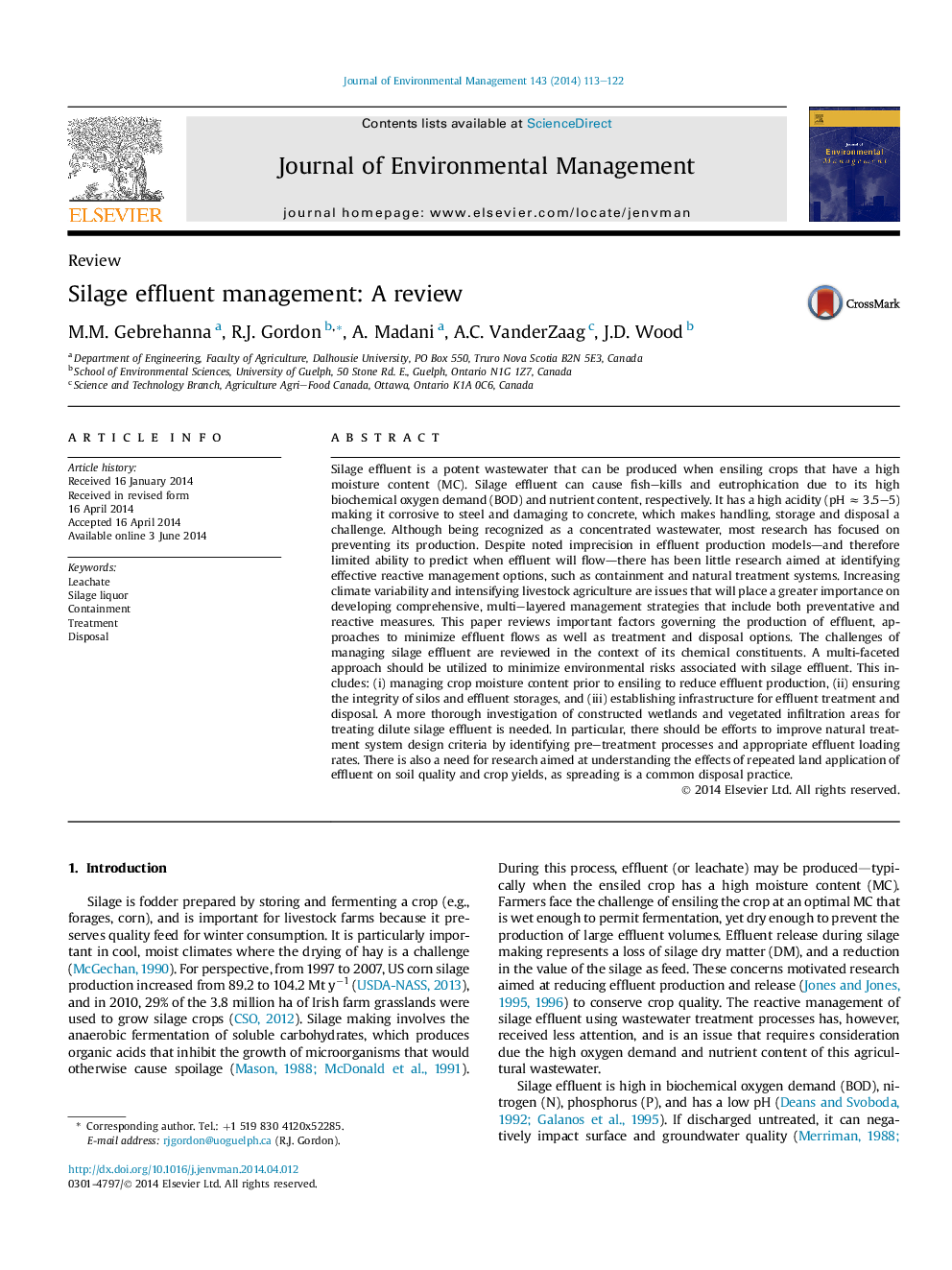| کد مقاله | کد نشریه | سال انتشار | مقاله انگلیسی | نسخه تمام متن |
|---|---|---|---|---|
| 1055760 | 1485269 | 2014 | 10 صفحه PDF | دانلود رایگان |
• The management of silage effluent—a potent wastewater—was reviewed.
• Models for predicting effluent production and flow are imprecise.
• Methods to prevent effluent flow from silage have variable effectiveness.
• Little research has investigated reactive effluent treatment systems.
• Research is needed to optimize vegetated treatment areas and constructed wetlands.
Silage effluent is a potent wastewater that can be produced when ensiling crops that have a high moisture content (MC). Silage effluent can cause fish–kills and eutrophication due to its high biochemical oxygen demand (BOD) and nutrient content, respectively. It has a high acidity (pH ≈ 3.5–5) making it corrosive to steel and damaging to concrete, which makes handling, storage and disposal a challenge. Although being recognized as a concentrated wastewater, most research has focused on preventing its production. Despite noted imprecision in effluent production models—and therefore limited ability to predict when effluent will flow—there has been little research aimed at identifying effective reactive management options, such as containment and natural treatment systems. Increasing climate variability and intensifying livestock agriculture are issues that will place a greater importance on developing comprehensive, multi–layered management strategies that include both preventative and reactive measures. This paper reviews important factors governing the production of effluent, approaches to minimize effluent flows as well as treatment and disposal options. The challenges of managing silage effluent are reviewed in the context of its chemical constituents. A multi-faceted approach should be utilized to minimize environmental risks associated with silage effluent. This includes: (i) managing crop moisture content prior to ensiling to reduce effluent production, (ii) ensuring the integrity of silos and effluent storages, and (iii) establishing infrastructure for effluent treatment and disposal. A more thorough investigation of constructed wetlands and vegetated infiltration areas for treating dilute silage effluent is needed. In particular, there should be efforts to improve natural treatment system design criteria by identifying pre–treatment processes and appropriate effluent loading rates. There is also a need for research aimed at understanding the effects of repeated land application of effluent on soil quality and crop yields, as spreading is a common disposal practice.
Journal: Journal of Environmental Management - Volume 143, 1 October 2014, Pages 113–122
